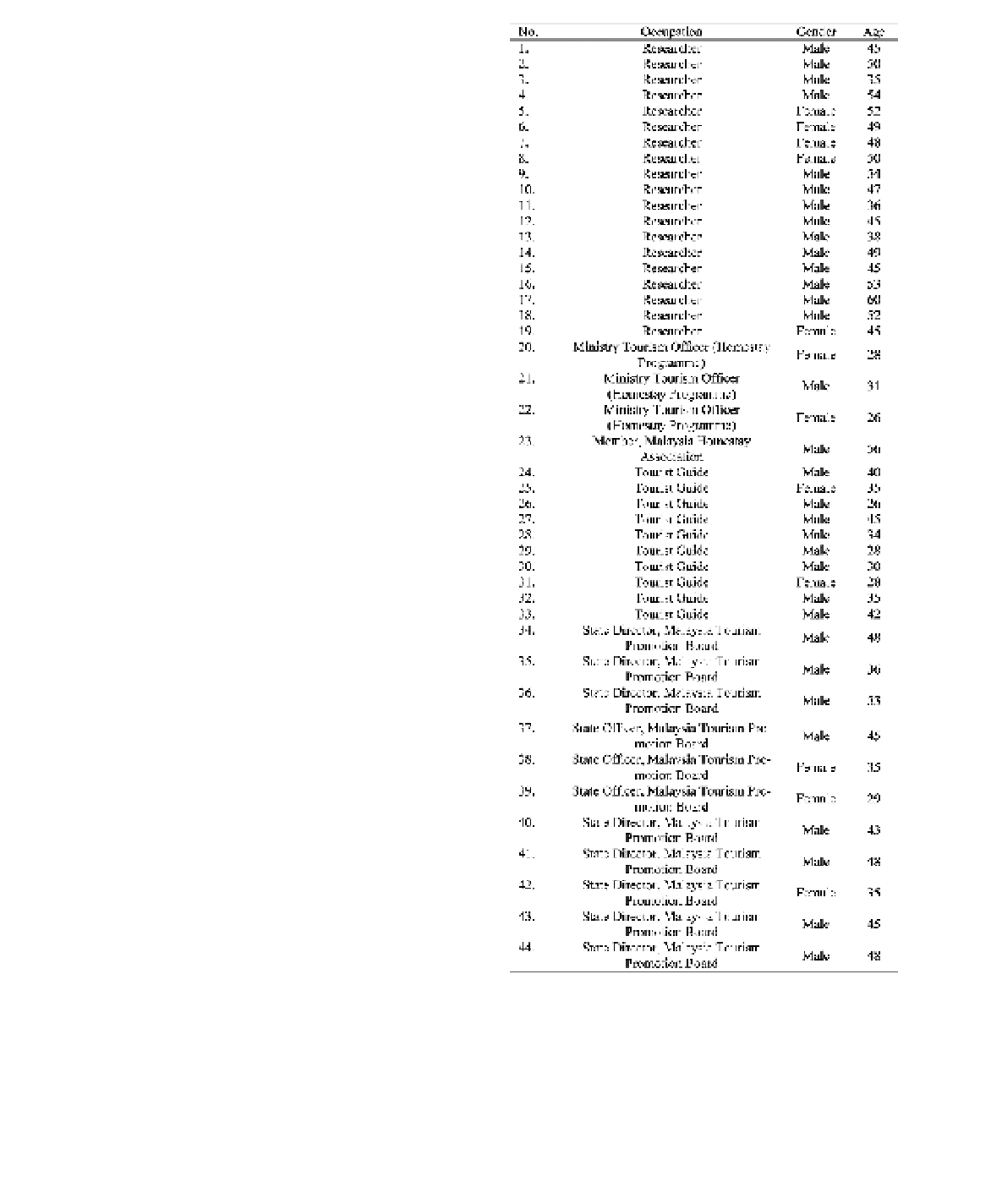Travel Reference
In-Depth Information
2 METHODOLOGY
Table 1.
Participant profiles.
2.1
Methodology
The study employed a qualitative method, involving
an open-ended email interview that aims to explore
perceptions and ideas from those who have high
familiarized with CBRH. Forty-four participants
were contacted and invited to respond to a set of
open-ended interview questions using convenience
and snowball sampling method, with the qualify-
ing criteria that they understand the nature and
operation of CBRH. There was an attempt to con-
struct a sample, which represented a good range of
groups with different interests in the programmes.
The profile of interviewees who participated in the
Email interviews is presented in Table 1.
Through the Emails, the researcher introduced
herself and her study. The participants were asked
to provide feedbacks to a list of questions attached
to the email. The list of questions is as follows:
a. From your observation, please name (up to five)
successful homestay programmes that are pro-
moted by the government in the rural areas of
Malaysia.
b. Can you explain why you consider the homestay
programmes your named above as 'successful'?
c. In your opinion, what are the critical fac-
tors that lead to the success of the homestay
programmes?
Question b and question care given to pur-
posely cross check participants' responses in order
for the study to conclude if the participants would
equate 'success of the Homestay programmes with
'the critical factors that lead to the success of the
Homestay programs'. The questions used in the
interview uses the term 'successful' as opposed to
'sustainable' as to understand whether the terms
carry the same meaning to the interviewees.
The feedbacks received from the interviewees
were compiled, tabulated and categorized in order
to conclude the interviewees' perceptions with
regards to CBRH programmes' success factors.
3 RESULTS
At the time of this article is written, there are 166
homestay programmes or clusters throughout the
rural areas in Malaysia. Among these homestay
programmes, Banghuris Homestay in Selangor,
was named as the most successful by the major-
ity of the participants. The Banghuris Homestay
has won numerous awards and recognitions such
as the winner of the Ilham Desa Competition in
2003 (Central Zone) and 2005, well as the Malay-
sia's Best Homestay Award in 2004 and 2013. This
homestay programme has attracted a large number
of tourists to visit this rural area to enjoy the
beauty of nature and at the same time, learn and
be aware of the resident cultures. A previous study
found that rural tourism in Banghuris has provided
numerous economic benefits to the villagers (Ham-
zah & Ismail, 2003). Other homestay programmes
considered as successful by the participants in this




Search WWH ::

Custom Search